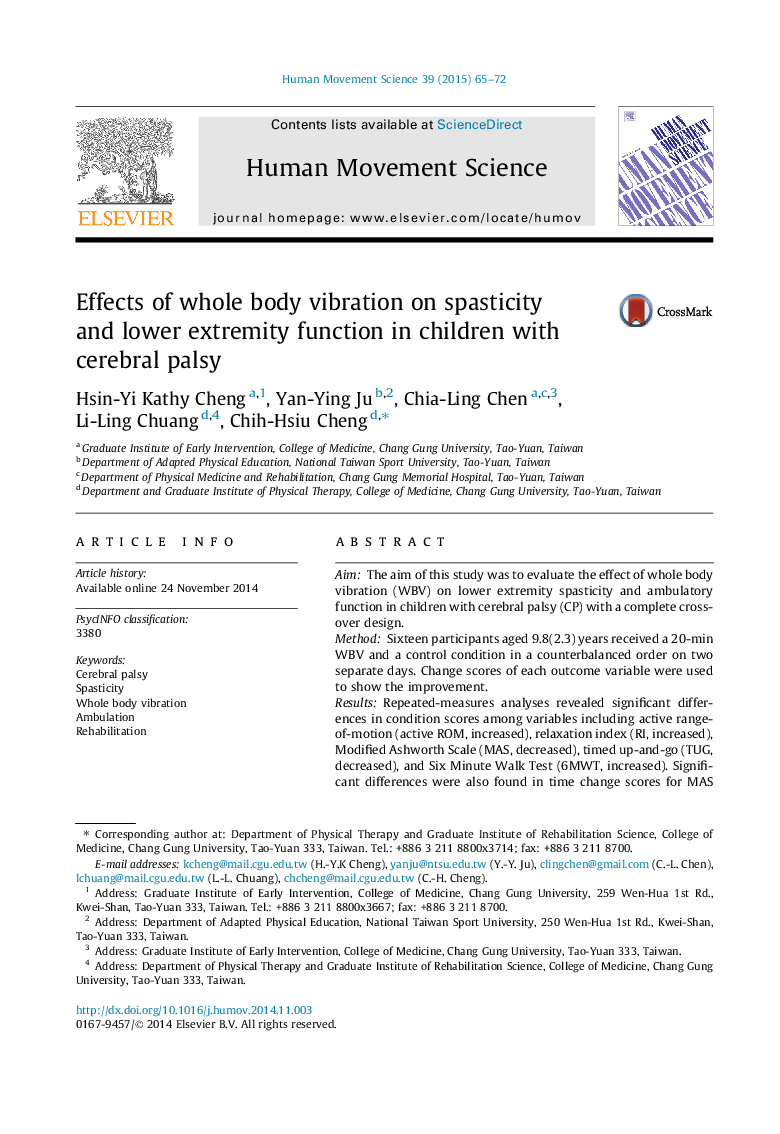| Article ID | Journal | Published Year | Pages | File Type |
|---|---|---|---|---|
| 928289 | Human Movement Science | 2015 | 8 Pages |
•WBV intervention can control the spasticity and enhance ambulatory performance.•WBV intervention can increase AROM in knee and ankle joints.•Timed up-and-go was significantly correlated with the relaxation index.•WBV can potentially be used as a rehabilitation protocol in children with CP.
AimThe aim of this study was to evaluate the effect of whole body vibration (WBV) on lower extremity spasticity and ambulatory function in children with cerebral palsy (CP) with a complete crossover design.MethodSixteen participants aged 9.8(2.3) years received a 20-min WBV and a control condition in a counterbalanced order on two separate days. Change scores of each outcome variable were used to show the improvement.ResultsRepeated-measures analyses revealed significant differences in condition scores among variables including active range-of-motion (active ROM, increased), relaxation index (RI, increased), Modified Ashworth Scale (MAS, decreased), timed up-and-go (TUG, decreased), and Six Minute Walk Test (6MWT, increased). Significant differences were also found in time change scores for MAS and 6MWT. Correlation results revealed that TUG was significantly correlated with RI (r = −.512, p = .042), and 6MWT (r = −.700, p = .003).InterpretationThis study suggested that WBV intervention can control the spasticity, enhance ambulatory performance and increase active ROM. Along with previous results, data from this study revealed the potential use of WBV in clinical rehabilitation in children with CP. Future investigations should focus on finding the combination of treatment frequency and duration to achieve an ideal result.
